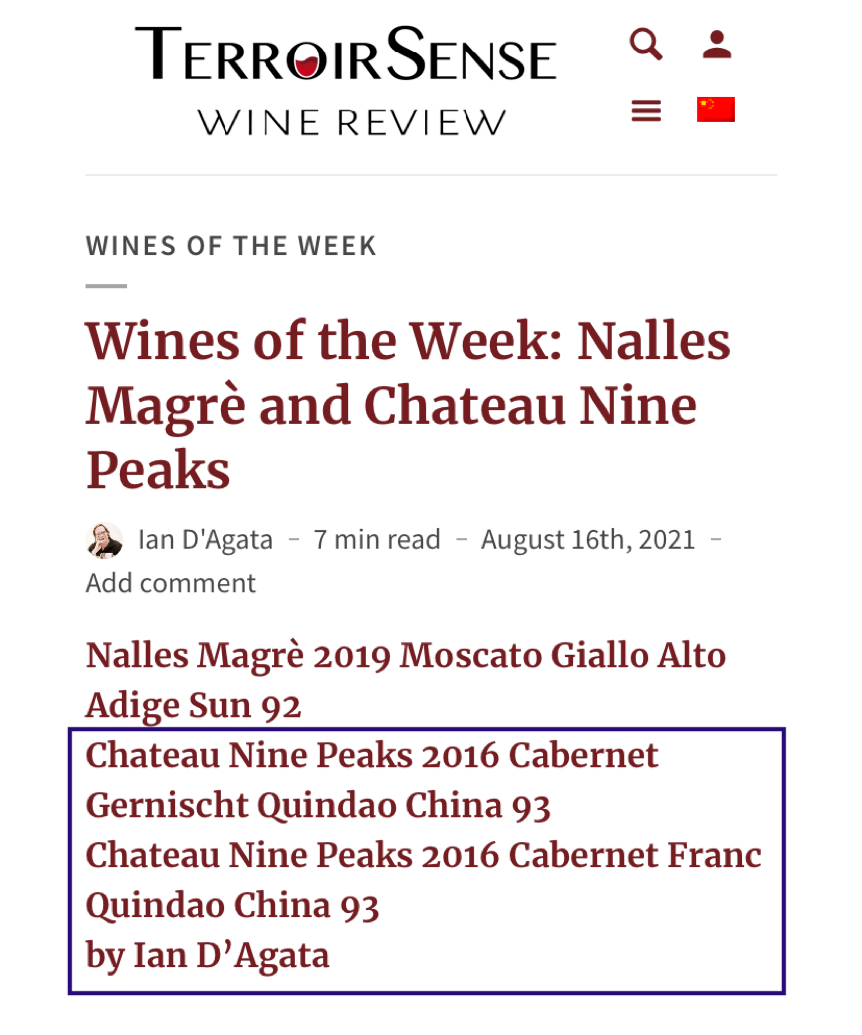
Dr Ian D'Agata, Editor-in-Chief of Terroir Sense Wine Review, in his latest issue (2021-08-16), "Wine of the Week" column", has scored and published his propounding tasting experiences of Chateau Nine Peaks' two single-variety wines from the vintage of 2016 vintage: Cabernet Franc and Cabernet Gernischt. With his permission, we have translated the original text into Chinese and shared it here with you, hoping to communicate with the wine lovers from more perspectives.
The original link of this review: https://terroirsense.com/en/p/4246.html
Chateau Nine Peaks 2016 Cabernet Franc Quindao China 93
Cabernet Franc
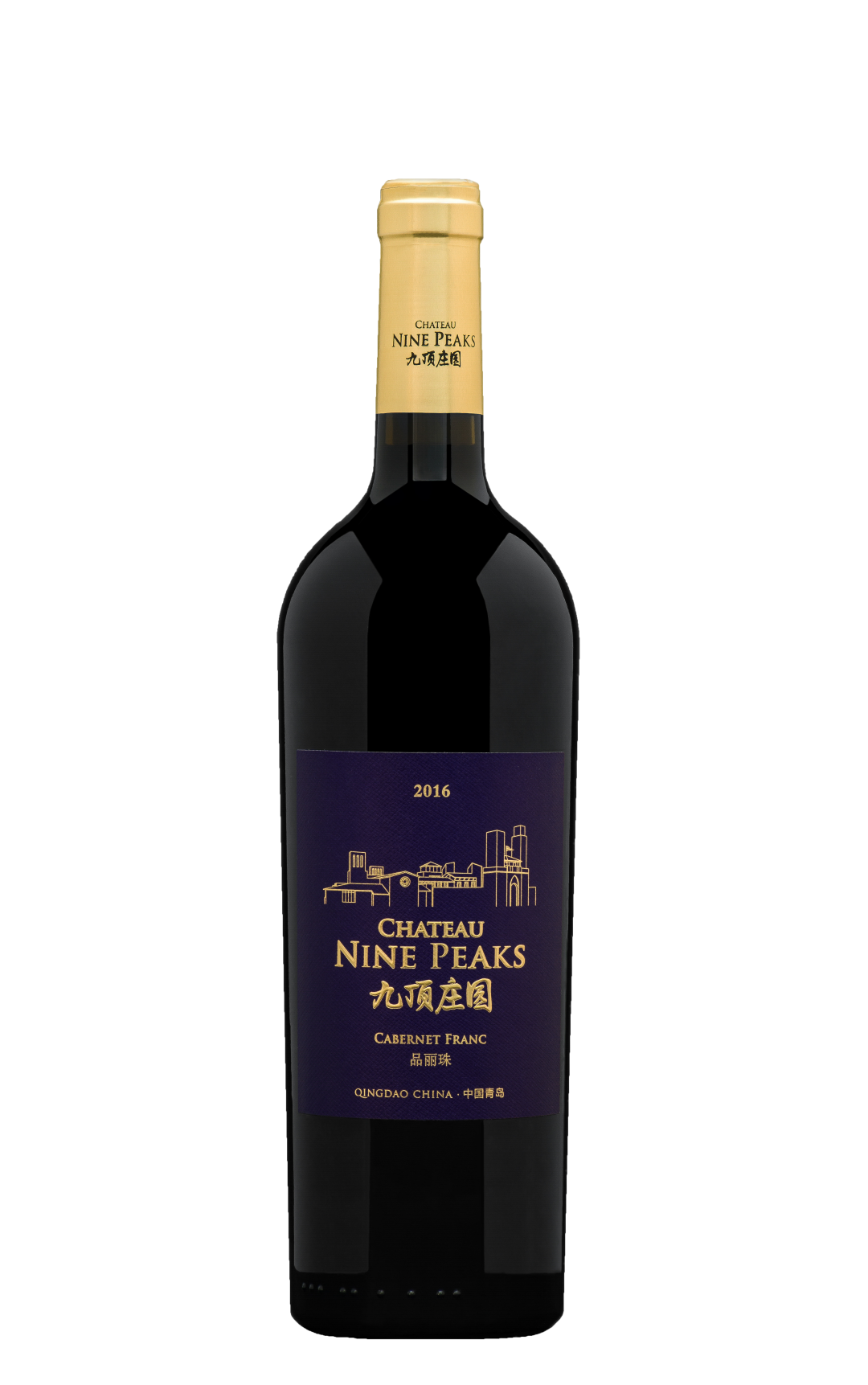
Chateau Nine Peaks 2016 Cabernet Gernischt Quindao China 93
Cabernet Gernischt
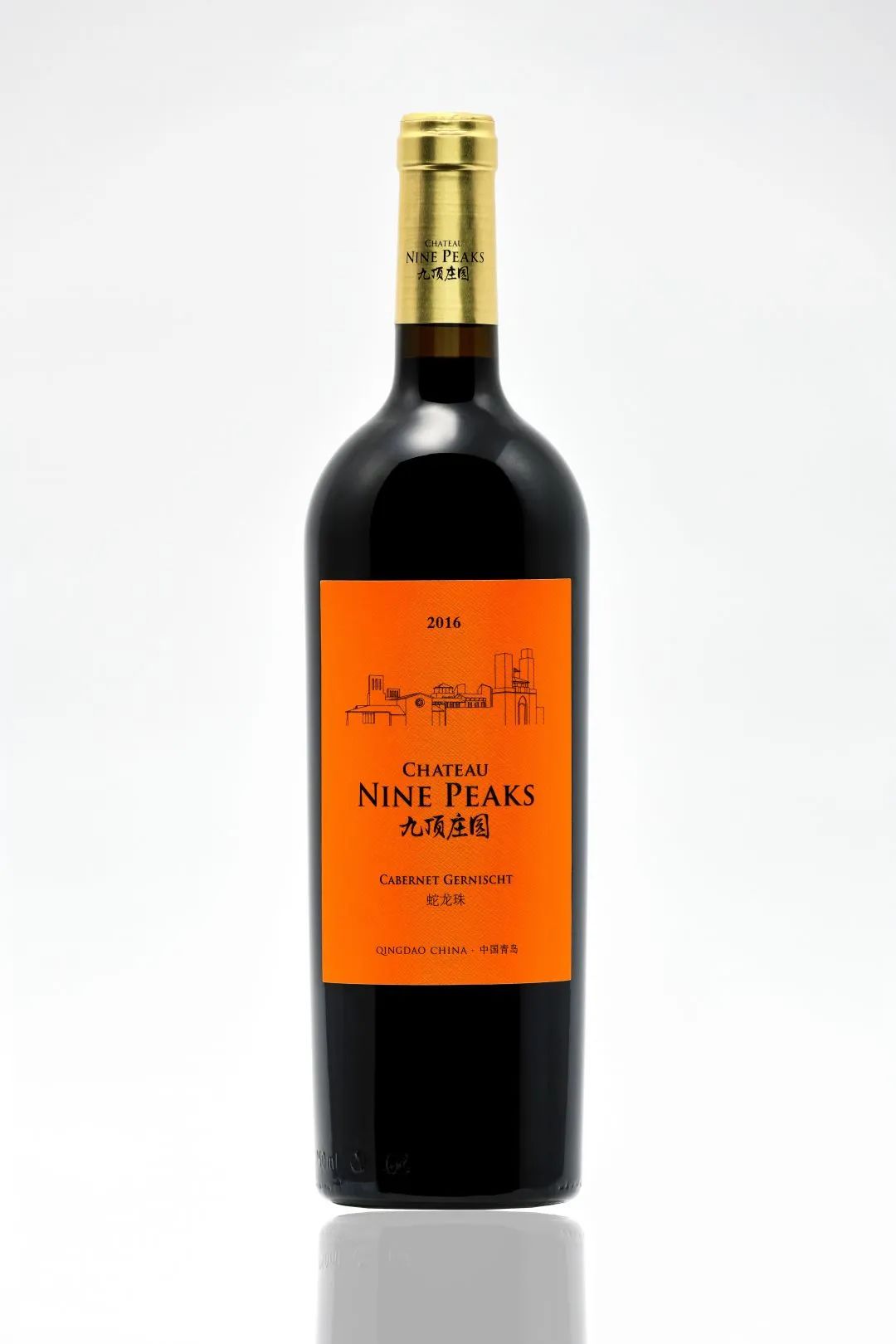
From C9P: At present, Chateau Nine Peaks has sold out these two wines. If you still have these two great wines, cherish them, please! As Ian mentioned in the article, the new vintage of C9P's CF & CG 2019 are also very high quality which both have been released recently. Don't miss them, too.


Ian D'Agata
● Chateau Nine Peaks may well be the best Chinese wine estate today, though the country actually boasts a number of excellent wine estates that are however still mostly unknown internationally. But with wines as good as the two I am about to describe, that international lack of renown is not likely to last long.
● The first thing to applaud Chateau Nine Peaks is the truly admirable restraint of all their wines: unlike many other Chinese and world wineries that try to score points (literally) producing big, thick, even massive wines that are usually over-oaked and devoid of nuance and harmony, just about every wine in the Chateau Nine Peaks portfolio is imbued with a real sense of elegance and grace. A case in point is their truly outstanding Chardonnay Qi, an oaked white wine that could easily be turned into a caricatural butterscotch-tropical fruit bomb as far too many New World Chardonnay wines are; but very commendably, not so at Chateau Nine Peaks.
● Two Cabernet wines of the estate's single vineyard/single variety "Collection" series of wines that I tasted recently during my latest winery visits confirmed, and then some, the gentle touch the winery technical staff is endowed with. Make no mistake about it, these are two world class wines, and the recent 2019 vintage has given wines that are almost if not just as good (the 2016 & 2019 vintage was an excellent one in Shandong).
Chateau Nine Peaks 2016 Cabernet Franc
The Chateau Nine Peaks 2016 Cabernet Franc Qingdao is medium red with a pale tinge. The nose boasts elements of real Cabernet Franc greatness, expressing that extremely perfumed, lightly aromatic nuance that makes the variety so unique among its many Cabernet relatives. Notes of strawberry and orange peel are complemented by an intense violet presence. Fresh and juicy but not harsh, it offers very floral, lively red fruit and herbal flavors nicely supported by polished tannins (this was aged in one and two years used 225-liter barrels for 10 months with no new oak). The finish is long and saline, lingering impressively with repeating floral echoes. The first vintage of a Cabernet Franc wine ever made at the winery, it's a very noteworthy effort already at the quality level of a good villages-level Loire, Niagara or Tuscan Cabernet Franc wine. But it's especially impressive given the youth of the vines (planted in 2012), so the future looks extremely bright indeed for the wine from Chateau Nine Peaks and I expect this to become a real showstopper and a very important wine for the winery. Drinking window: now-2028.
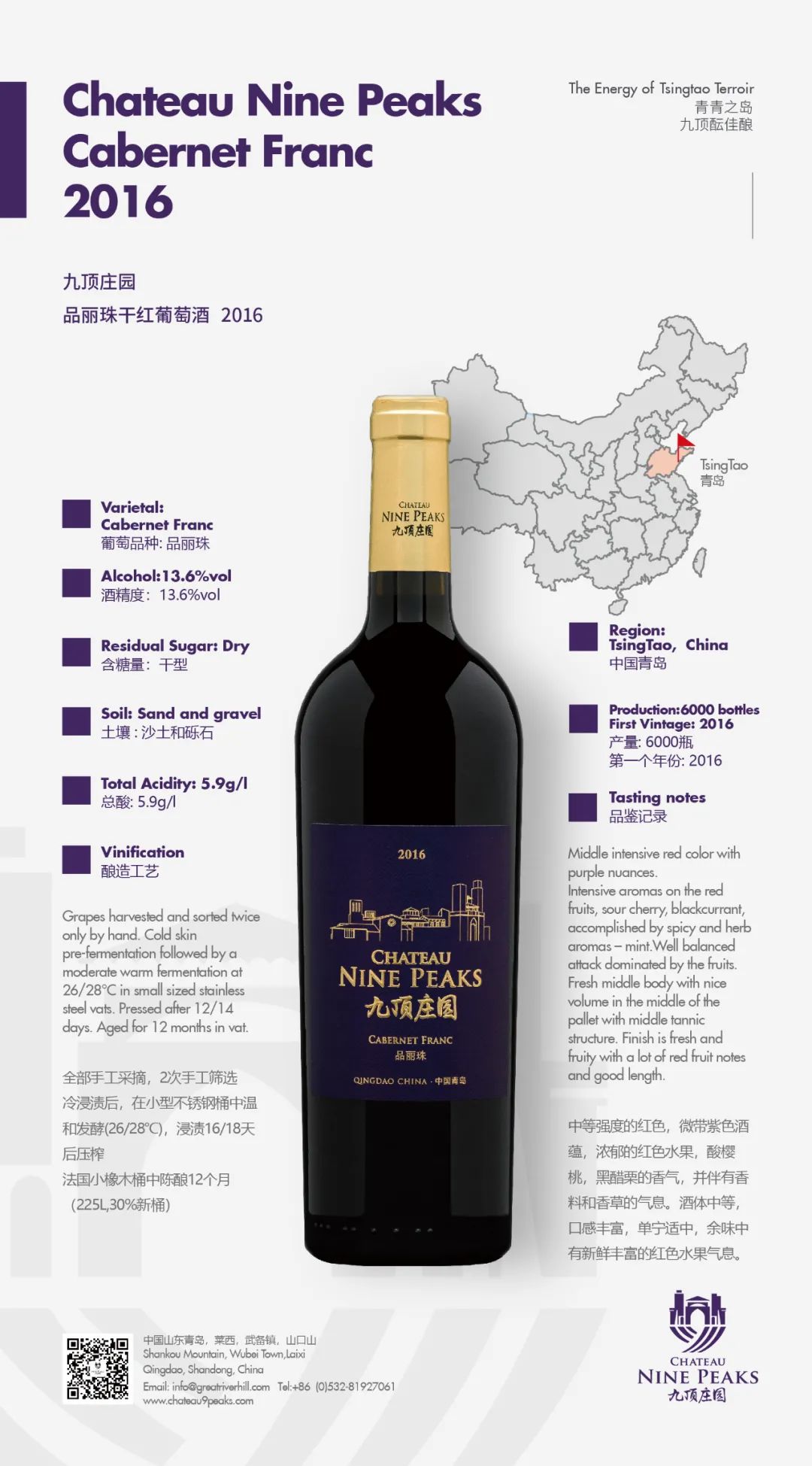
Chateau Nine Peaks 2016 Cabernet Gernischt
Just as good a wine but very different (as it should be given it's made with a totally different variety), is the Chateau Nine Peaks 2016 Cabernet Gernischt Quindao. Bright red-ruby in colour, it has deep purple highlights. Initially very closed on the nose, it opens with aeration to reveal really beautiful strawberry, herb, mineral and noble cocoa notes: in many respects, this wine "out Cabernet Francs" the Chateau Nine Peaks Cabernet Franc wine! Multilayered and suave, with deep flavors of red and blue fruit with sweet spicy and herbal nuances, the gently tannins and fresh acidity provide adequate support and extend the flavours on the long smooth finish. Very juicy and fruity, this is a beautiful example of just how good wines made with Cabernet Gernischt can be in Chinese terroirs. It was aged in 30% new barriques but the fruit is so rich, suave and dense that you won't be able to tell that much new oak was used. About 6000 bottles made, and the recently released 2019 is even more impressive. Drinking window: now-2028.
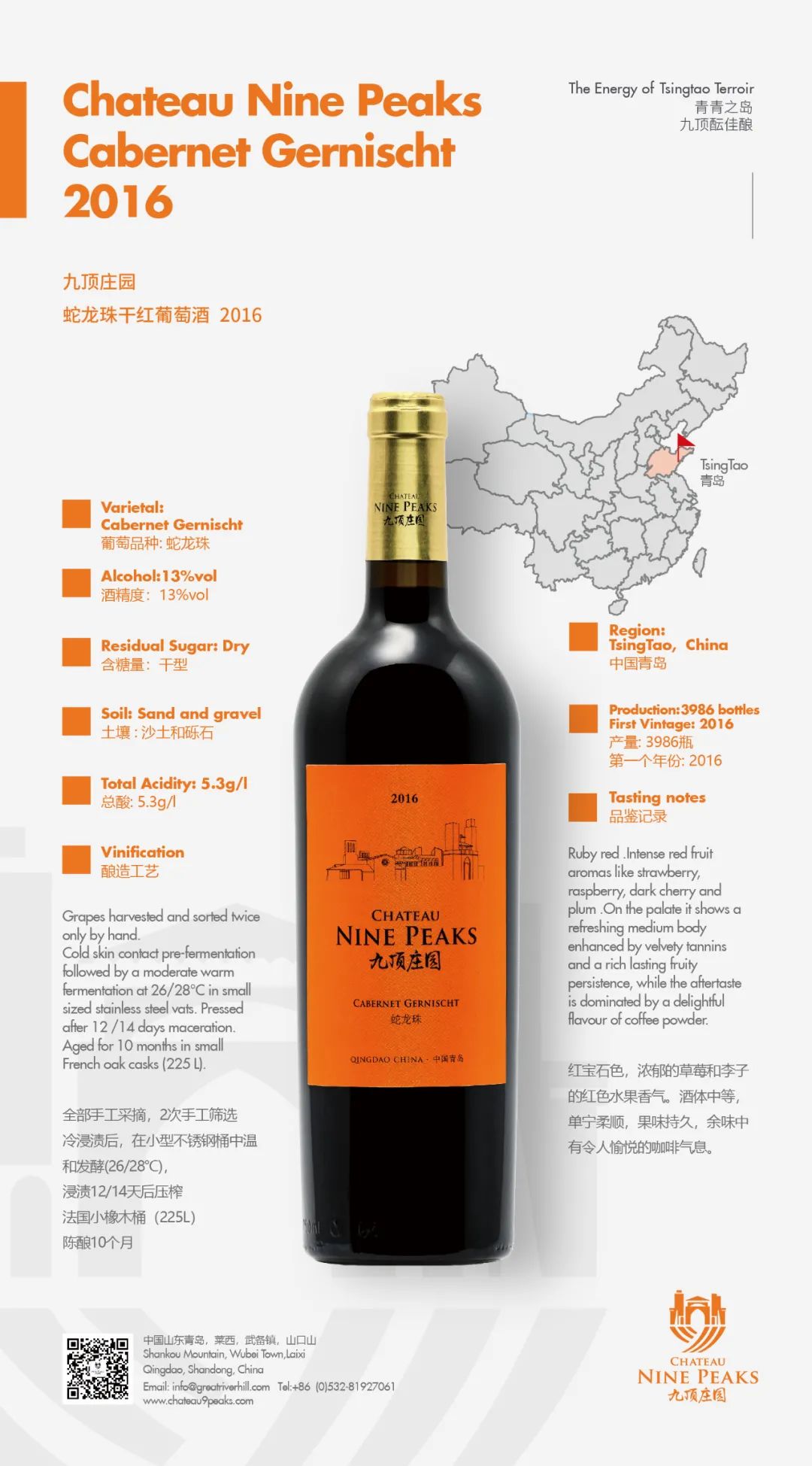
·Cabernet Gernischt
Cabernet Gernischt is a real success story in China and though it was erroneously passed over in the misguided goal to plant more Cabernet Sauvignon, a variety that despite what people would like to hear and what is said and written does not in fact give especially memorable wines in China (at least when compared to the world's best), my hope is that more and more wineries are seeing the error of those ways and are studying and working with this variety more (a Chinese biotype of most likely Carmenère, though some experts believe it might descend from Cabernet Franc instead) that can give exceptionally good wines in China and that I will publish an entire article on in the weeks ahead: read about it here at TerroirSense.

Ian D'Agata
Ian D'Agata
Editor-in-Chief of Terroir Sense Wine ReviewPresident of Terroir Sense AcademyVice President of Association Internationale des TerroirsChief Scientific Officer of TasteSpirit
Ian D'Agata has been writing and educating about wines for over thirty years. Internationally recognized as a distinguished expert, critic and writer on many wine regions, his two most recent, award winning books Native Wine Grapes of Italy and Italy's Native Wine Grape Terroirs (both published by University of California Press) are widely viewed as the "state of the art" textbooks on the subject. The former book won the Louis Roederer International Wine Awards Book of the Year in 2015 and was ranked as the top wine books of the year for the Los Angeles Times, the Financial Times and the New York Times, while the latter was named among the best wine books of the year by Food & Wine Magazine and the NY Times.